Dental prosthetics in children
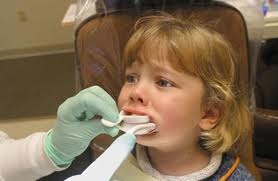
Dental prosthetics in children - one of the young areas of dentistry.
Children's orthodontics has been successfully developed since the mid 30s of the last century.
This is explained by the fact that children's dental prosthetics has a beneficial effect both on the development of the dentofacial system and on the whole organism.
Causes of lack of teeth in children
- Caries not treatable and its complications.
- Tooth injury.
- Neoplasms and inflammatory processes of the oral cavity.
- Infectious diseases.
- Adentia.
- Retention.
The most common cause of tooth loss in young children is tooth decay and its complications.
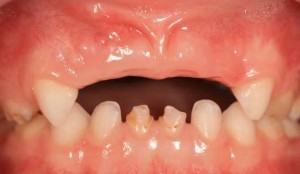
The frontal teeth are most often destroyed and fall out, a little less often - the first molars and much less often - premolars.
In second place among the causes of lack of teeth in children is trauma.
Children are more likely to be injured due to greater mobility and less caution.
Most of the injuries sustained during childhood have an adverse effect on the processes of development and growth of the jaws, teething and tooth formation.
The causes of adentia in childhood are not fully understood.
More often than others, there is a lack of upper lateral incisors, upper or lower second premolar, third molars.
In addition, there may be a congenital absence of some or all of the lower jaw incisors, the first and second premolars.
Rarely enough, you can find the absence of individual fangs.
Prosthetics of children with full edentia should be started as soon as possible.
Children suffering from this disease lag behind in height and weight, because the body does not receive mechanically processed food in sufficient quantities, which is necessary for the normal development of the child.
When required
Prosthetics are necessary in the following cases:
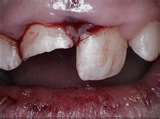
- If the teeth destroyed by caries cannot be restored.
- With tooth decay by fluorosis, which cannot be restored.
- If tooth extraction is necessary as a result of the onset of the inflammatory process in the periosteum (periostitis that has begun).
- When loosening and tooth loss during periodontitis.
- If premature loss of milk tooth occurred more than a year before the appearance of a permanent one. If this is not done, a pathological bite may develop.
- A tooth affected by caries, which after restoration is a cosmetic defect. This is especially true for teeth falling into the smile zone.
In these cases, it is advisable to carry out prosthetics of the child’s teeth, which has significant differences from adult prosthetics.
goal
- Prevention of jaw deformation.
- Stabilization of the correct growth and development of the jaw.
- Normalization of the functions of chewing and speech.
- Tooth development.
- Normalization of breathing.
- Recovery of the digestive system.
Video: “The smile of the future: primary teeth prosthetics”
Dentures for children
Since the children's dental apparatus is not yet fully formed, and the mucous membrane of the oral cavity and tooth tissue are quite sensitive and delicate, dental designs for children should be as simple and atraumatic as possible and should not impede the growth of the jaw and dental arches.
Orthopedic structures are usually temporary and must be replaced after some time.
Material Requirements:
- Ease.
- Hypoallergenicity.
- Security.
- Resistance to chemical and mechanical influences.
- Do not swell in a humid environment.
- Have minimal shrinkage.
Materials:
- Acrylic plastics.
- Chrome steel.
- Tin and silver based alloys.
- EI stainless steel - 95.
Kinds
Dentures for children by appointment are divided into:
- Medical - restore functional and morphological disorders of the teeth.
- Preventive - prevent deformations and anomalies in the development of jaws and teeth.
- Fixing - designed to fix orthodontic appliances, dental structures, cushioning and medical materials.
Children's dentures are:
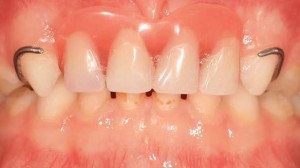
- Removable and non-removable.
- Temporary and permanent.
- The pins are installed in the roots of the front teeth of the upper jaw and the canines of the lower jaw. Children's dental prosthetics using pins is carried out according to the method of carborundum stones.
- Tabs are used in the presence of defects, provided that the dental pulp is preserved.
- Crowns are used for partial tooth decay and tooth decay. When installing, they should not go beyond the edge of the gum. During the preparation of the tooth, the pulp is preserved, and the turning is carried out according to the usual method.
- Bridge prostheses.
- Removable plate structures should be without clasps, the basis of the structure should be large. Used in the absence of several teeth. To expand the jaw and implement orthodontic corrections of the location of the teeth, sliding plate constructions are used.
- Fixed preventive devices.
The most optimal option for prosthetics is removable prosthetics.
This is due to the fact that the dental apparatus and jaw of children are in a state of active growth. Therefore, all dental designs for children require regular replacement.
Removable dental structures can simultaneously be orthodontic control devices.
They are used in the case of a combination of tooth loss and anomalies of the dentition. Coffin spring, sliding screw, occlusal plates, vestibular arch, etc. are added to such designs.
If the design is used as an orthodontic apparatus, then the prosthesis should be fixed with the help of clasps.
Crowns
By time there are:
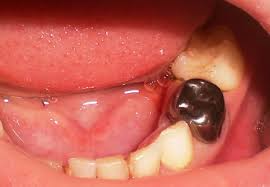
- Temporary.
- Permanent.
Temporary crowns include: preventive and fixing.
They are used, for example, with traumatic breaking of the cutting edge or angle on the front tooth to fix the medical material. And also for fixing devices, with the aim of preventing tooth displacement, with defects in the dentition.
When prosthetics with temporary crowns, the preparation of the teeth is not carried out.
Crowns are used for:
- Complete tooth decay with caries.
- Tooth injury.
- Destruction by 2/3 of the deciduous tooth with caries.
- Restoring a depulped tooth.
- Teeth grinding (bruxism).
- Restoring permanent teeth with a violation of the development of enamel.
- Restoration of teeth with active caries.
Pros:
- Oral hygiene does not suffer.
- Prevention of relapse of caries.
- High esthetics.
- Restoring the functionality of a damaged tooth.
Bridge prosthetics
Designs are divided into: medical and preventive.
Preventive measures are applied only in the absence of one tooth. Apply sliding bridges or with one-way reinforcement.
In the presence of a tooth root, the fixation of the structure can be carried out using a pin tooth.